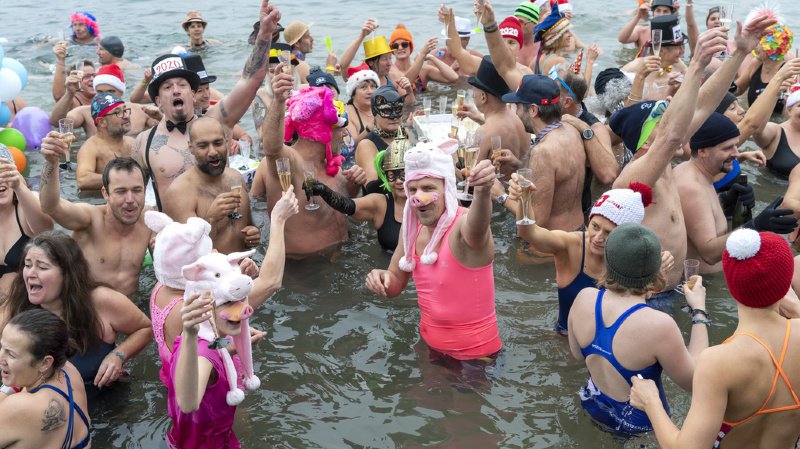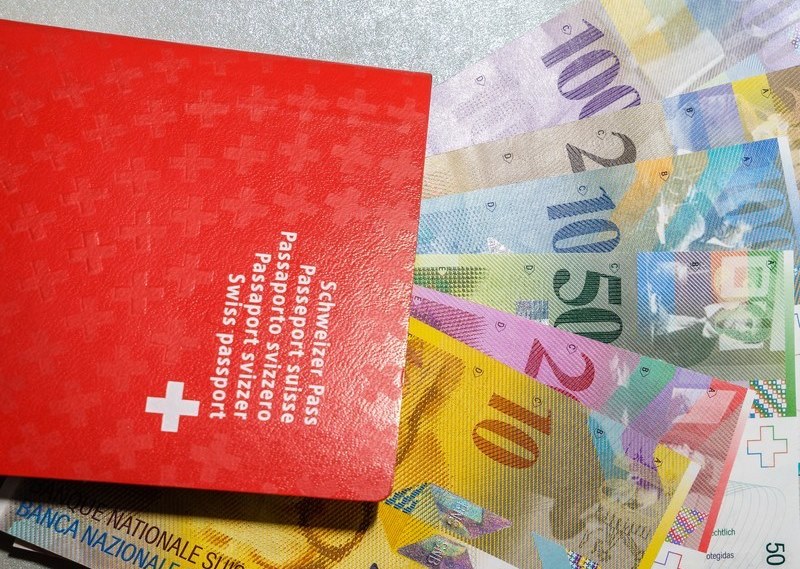The year 2007 heralds caviar’s return to Russian deluxe shops in Europe. Its exportation was banned in 2006 by CITES (Secretariat for Compliance with the International Endangered Wild World Species Trade Conventions) in an attempt to stem depletion of this resource. It should be pointed out that this was a fair decision, taken at the appropriate time.
Fishing often turns into ravenous exploitation, which, including poaching, has lead to the reduction of fish and shellfish stocks and the exhaustion of internal fish farming. In Russia stocks are often in critical condition, supported mainly by artificial reproduction.
Aquaculture – The key to the sturgeon’s survival In such conditions, aquaculture – the most dynamic sector of the food industry – has become the only reliable means of increasing seafood product volumes.
Worldwide experience and practices attest to that.
In the last decade, aquaculture’s annual product growth oscillated between 7 and 10 percent and was quite stable. According to the FAO, worldwide seafood production reached 54.8 million tons, 25.2 million tons of which was from internal fish farming, with 29.5 million tons coming from the sea, or one third of the total production volume of the fishing and aquaculture sector. Total worldwide aquaculture production is estimated at US$67.3 billion, including US$29.4 billion in internal fish farming and US$29.5 billion from the sea.
The bulk of seafood products is made up of fish, shellfish and crustaceans (42.3 million tons).
Aquaculture product statistics for per continent distribution show that Asian and far eastern states dominate the market. The current production volume of the fish and invertebrates on the Asian continent has reached 37.6 million tons (Europe – 2.2 million tons, North and South America – 1.8 million tons).
The ten leading countries predetermining the current state of aquaculture and the rate of its development include China (28.9 million tons), India (2.2 million tons), Indonesia (1 million tons), Vietnam (0.9 million ton), Japan (0.9 million tons), Bangladesh (0.9 million tons), Thailand (0.8 million tons), Norway (0.6 million tons), Chili (0.6 million tons) and the USA (0.5 million tons).
Tame baby-fish Sturgeon breeding in Russia started in the second half of the 19th century. In the 1970s, the young, 1 to 3 kg sturgeons, starred sturgeon and beluga were released from 21 sturgeon factories into the rivers Volga, Don, Kuban, Urals and Terek. This exceeded 130 million fish per year. Industrial fishing was near 28 thousand tons, while black caviar production exceeded 2,000 tons.
After the collapse of the USSR, and due to the absence of a united control system, a wide range of illegal fishing, reduction of natural breeding and artificial reproduction decimated the entire sturgeon population (up to 80 million young species) and industrial fishing drastically decreased. By 2000 already, the official catch of the Caspian and Azov sturgeon amounted to 500 tons only .
The drastic drop in the sturgeon catch of the Azov and Caspian basins indicates the need to expand different forms of commercial sturgeon production, whose entire volume in 2004 amounted to around 12 thousand tons, which significantly exceeds the catch of natural reservoirs. Moreover, worldwide experience has demonstrated the possibility of preserving gene banks for many fish in the artificial conditions of aquaculture.
The necessity to preserve and make stable use of sturgeon is also dictated by the fact that, as of 1998, 23 types of sturgeon were included in the CITES, Annex II (the International Endangered Wild World Species Trade Convention).
The increasing number of sturgeon breeding factories – from 19 in 1994 to more than 120 in 2004 – and the increase of the total production volume – from 200 tons to 3,000 tons in the same time span – has set a trend for aquaculture development in Russia. The main reasons for such growth was the disastrous reduction of the sturgeon catches in the southern seas and in Siberian rivers, the termination of different forms of sturgeon breeding, technological development, and the formation of parent cattle of various types and hybrids of sturgeons.
Around 75% of sturgeons in Russia are produced in the heated waters of fish-breeding plants near power stations or hydro-electric stations. In addition, ponds are actively used for intensive sturgeon breeding.
Sturgeon commercial production is one of the most promising aquaculture developments in Russia. It is interesting that such development is, to a certain extent, possible at any fishing factory. And it is a profitable business, because in spite of the technological differences, the efficiency of all forms of sturgeon commercial production reaches no less than 60 percent.
Of course the cost of such unique production is greatly influenced by its energy consumption and differences in labor costs. Thus, in any case, factories with a self-conducted water supply will have a great advantage over factories with a forced water supply. Considering that the cost of forced water supplies in highly intensive factories may reach 40% of total costs, self-conducted water supply factories’ profitability may actually hit 100%.
Theoretically, the most profitable is sturgeon cattle breeding (up to 135% profitability). However, under the current conditions, its advantages cannot be realized because security of wide open reservoirs costs a lot, and in many cases is simply technically impossible.
How much? An economic efficiency comparative analysis of American white sturgeon breeding was conducted by scholars of the University of California 10 years ago. The study took place over a period of 18.5 months and looked at sales at a weight of 1.4 kg at a price of US$6.6 over 6 years, and more with the purpose of getting food caviar. It showed that, at a price of US$331 per kg of black caviar, the second activity becomes more profitable, seeing that, currently, the wholesale price for caviar in Russia and abroad exceeds US$600 per kg. American scholars did not account for the taking of caviar from live fish, which allows one fish to be used several times. Such an option opens up significant opportunities for increasing profitability of sturgeon breeding for the purpose of commercial caviar production.
The volume of the Russian market using this method is estimated at around 100 tons, while the worldwide market is estimated at 1,000 tons. In 2004 the entire volume of black caviar in the world amounted to 25 tons, including less than one ton in Russia.
The reason Russia lagged so far behind was that the economic instability of the preceding years made risky projects impossible investments. With an underdeveloped insurance system, and the risks involved in working with live fish, pay back terms of over 4 years were unacceptable.
This was even more obvious since the wholesale price for live commercial sturgeon (of 1.2 – 2.0 kg) in Russia is higher than in other countries and is US$10 – US$12 per kg. Profitability of such shortterm projects with relatively minor investments and risks stay very high. The commercial sturgeon market capacity in Russia is less than 15,000 tons. This factor stimulates foreign investments in this industry.
The call of the Russian fishermen, “If you want to eat black caviar from Russia, you must invest in its production”, found receptive ears in Europe. The potential is there. Just like the plan for 2006, the privatization plan for 2007 introduced to the Russian Federation Government, envisages privatization of a number of factories producing young fish, commercial fish and caviar.
For a long time, a significant technological barrier to the profitable production of black caviar was that no express method existed to determine a sturgeon fry’s sex. This allows to sell 1.0 to 1.5-year old males after they reach commercial weight, and to subsequently breed only females, significantly improving economic efficiency of the caviar sturgeon production.
Now sturgeon sex and stages of maturity can be determined with a widely-used, non-traumatic ultra-sound diagnosis. It allows selection of 1-2 year old males for commercial sale within a matter of 5 to 7 seconds.
The commercial sturgeon production in Russia can therefore currently be considered as part of a mature aquaculture industry. Moreover, all the prerequisites available for the mass development of aquaculture exist. Breeding technologies and methods to commercially produce valuable fish types are ready for industrial implementation. CITES’s Russian arm started work in mid 2005. This is essential for the export of sturgeon production. In 2007 the “Aquaculture of Russia” federal program and the national project of fishery development both kick off. A project schedule is currently being drawn up in the framework of these programs, which will include construction of new, and upgrading of old, fish-breeding factories.
At the end of July, the first deputy premier of Russia, Dmitry Medvedev, visited a fish-breeding factory in Sakhalin, where a unique green sturgeon is being bred.
Mr. Medvedev, who is responsible for the development of the priority national projects in Russia, promised that the aquaculture development program would be included in the national project, “Development of the Russian Agriculture”. Russian aquaculture will this way receive more robust support. The state intends to help modernize and build infrastructure for fish-breeding factories, as well as lower interest rates on loans. Under the terms of the state-private partnership, plants will be leased on a long term basis. So prospects look good. The key is to take advantage of initial opportunities. Russian caviar will then soon appear on European dinner tables.













